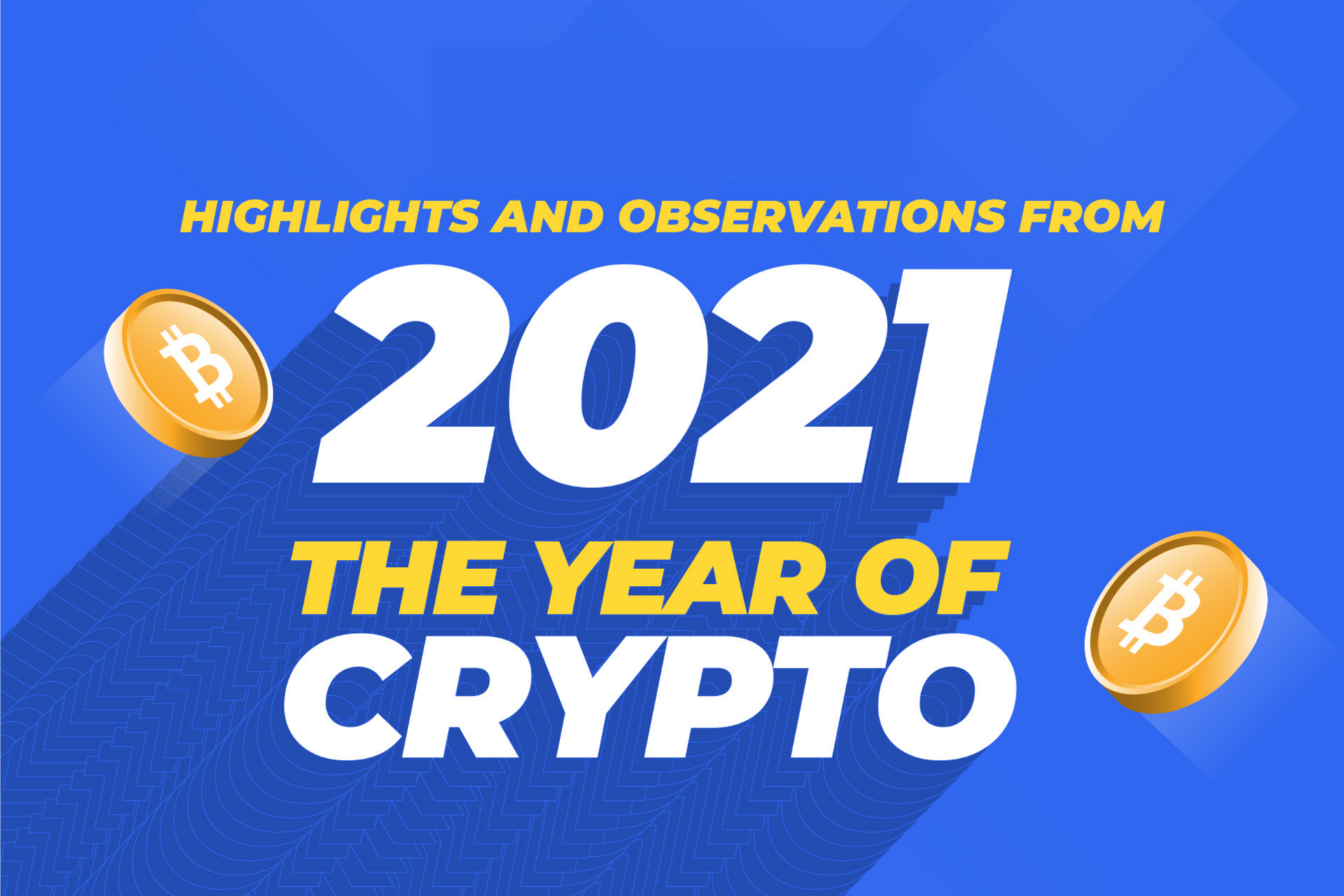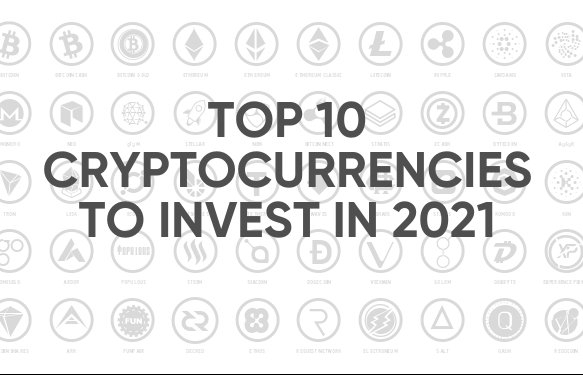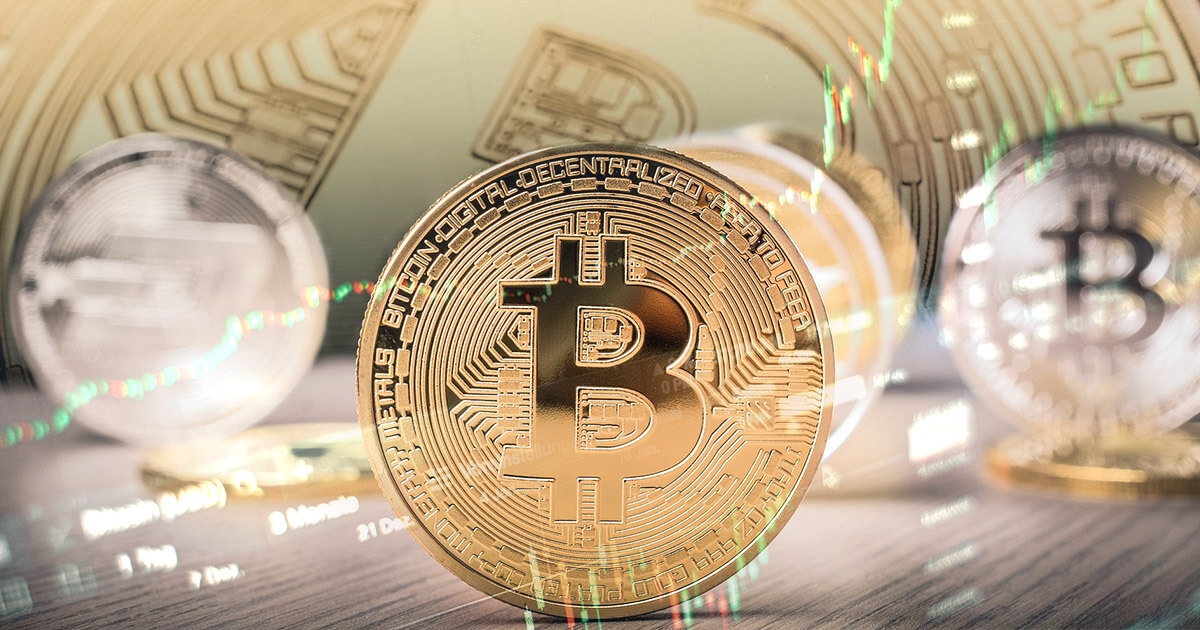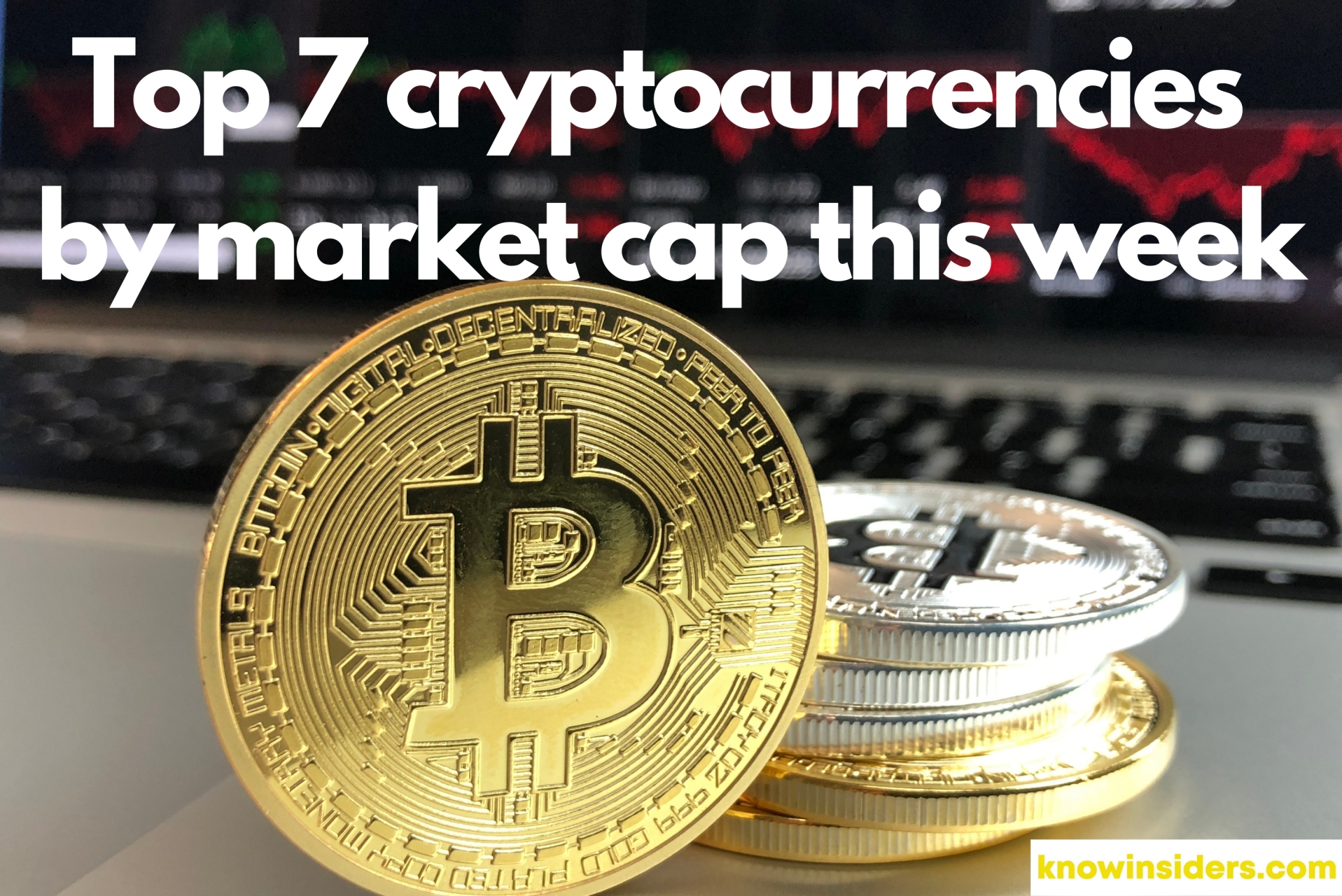Top 20+ Expert's Predictions For Cryptocurrency In 2022
 |
| Expert's Predictions For Cryptocurrency In 2022 |
The CEO of Ether Capital flags 5 crypto-market trends to expect in 2022 — including a breakout for solana and a rocky start for ether.
While Bitcoin was the first and still remains the best-known cryptocurrency, literally thousands of other cryptos have entered the scene. Part of the reason for the hype surrounding the asset class is the tremendous returns that have been earned by some investors. Bitcoin, for example, was the best-performing asset from March 2011 to March 2021, with a staggering 230% annualized return. The next best-performing asset class over that time period was the Nasdaq-100 ETF, symbol QQQ, with “just” a 20% annualized return.
The bitcoin price has fallen to lows of just over $45,000 per bitcoin, a more than 30% decline from an all-time high of almost $70,000 last month. Meanwhile, other major cryptocurrencies, including ethereum, Binance's BNB, solana, cardano and Ripple's XRP have also struggled—all dropping double-digit percentages from their highs.
But, what’s to come for the rapidly growing cryptocurrency market? Here’s a look at some of the most popular cryptocurrency predictions for 2022.
Crypto Highlights
 |
| 2021 Crypto Review |
2021 was a breakthrough year for the cryptocurrency market. We have seen how Bitcoin hit new record highs, observed the emergence of a legitimate legal framework in many countries which is already having a big impact on the industry and is gathering institutional support from large companies. The interest of ordinary people in cryptocurrency has skyrocketed this year, mainly because of opinion leaders such as Elon Musk and Jack Dorsey.
But let’s highlight the key events that inevitably influenced not only the BTC price but the future of the crypto industry.
1. Coinbase IPO
I think that many people underestimate the importance of this event, especially after its share price has dropped significantly. I want to emphasize that no matter what the price of shares is currently, the very entry of the exchange into the first listing in the history of the crypto industry has great implications for the cryptocurrency market.
The successful listing was a victory for the entire market, as it became a kind of marker of approval and support for the sector from traditional finance. For the industry as a whole, the Coinbase IPO looks like the consent of regulators to work with crypto assets in the legal field. In addition, Coinbase's decision had a positive impact on other market players, for example, Kraken announced its decision to go public in 2022.
2. Binance ban in the UK and Europe
For a very long time, we have heard the position of large traders that although Binance is not a regulated exchange and does not follow the rules of the game, “it is too big a player in the market for anything to happen to it”. However, recent events have shown the opposite. The consistent ban of the exchange in Europe and the introduction of mandatory KYC showed that we have finally come out of the Wild West stage and entered the regulated world (albeit, of course, not ideal yet, but it's a start).
3. The emergence of Bitcoin ETFs
The Bitcoin Strategy ETF is the first U.S. exchange-traded fund based on bitcoin futures from the Chicago Mercantile Exchange (CME Group) and approved by the Securities and Exchange Commission (SEC). The Bitcoin Strategy ETF started trading on 19th October 2021 on the New York Stock Exchange (NYSE). The event attracted a record amount of institutional capital: the firm that launched the Bitcoin futures ETF (BITO) filed an application with the CME to remove restrictions on the maximum amount of contracts to buy.
 What is the Future of Facebook's Diem Cryptocurrency in 2022? What is the Future of Facebook's Diem Cryptocurrency in 2022? Facebook's Diem cryptocurrency (now Meta's Diem) is both a potential point of mass adoption for the still-scaling cryptocurrency ecosystem. It's also unlike any other ... |
Top Expert predictions for cryptocurrency in 2022
1. Ethereum May Overtake Bitcoin
 |
| Photo: vietnamnet |
Ethereum is not as widely known as Bitcoin, but it should be. Currently, Ethereum is the second-largest cryptocurrency, and its gains have been outpacing Bitcoin’s. If current trajectories continue, Ethereum may very well overtake Bitcoin as the most valuable cryptocurrency sometime in 2022. This might make Ethereum an interesting choice for investors looking to diversify their crypto portfolios away from simply owning Bitcoin.
Should You Invest In Ethereum?If you decide to invest in ether (and therefore, in Ethereum), you should first ask yourself why you are investing. Although the price of the coin has risen substantially over the past year, it can be extremely volatile. Thus, if you buy ether simply hoping the price will rise, you may end up frustrated. On the other hand, the Etherum blockchain can be used for many different applications, said Tally Greenberg, head of business development at Allnodes. “Ether is the cryptocurrency required for any transaction made on Ethereum, a blockchain network of applications. A blockchain, on the other hand, is a technology with limitless potential. It doesn’t rest on Ethereum alone and can be used to make a difference in our future with or without cryptocurrencies.” Sam Bretzmann, the owner of Blocklink, agrees with this sentiment. “The difference here is that instead of investing in individual projects which may or may not make it, you can invest in the infrastructure. You can think about it like this, go back to 1999, and instead of having to try and pick which up-and-coming businesses will survive, you get to just pick ‘the internet’ and invest in that.” |
2. Solana stands out in the altcoin pack
Bitcoin and ether have had a fantastic year, rising by 69% and 440% — but solana puts them both to shame. The so-called ethereum killer facilitates faster, cheaper transactions than ether and has grown hundredfold in 2021 to become the fifth-most-valuable cryptocurrency. Mosoff said he believes the token's best days are ahead of it.
"I think solana is something still definitely to be watched," Mosoff said. "There is a huge community rallying around solana. There's an argument that they use a different programming language, Rust, which may have more flexibility or more developer support from people who aren't familiar with Solidity, the language on ethereum. So solana, to me, is kind of the forerunner of this batch of ETH competitors."
Mosoff said the token should continue to gain market share and had "the right ingredients in place" to be the best complement to ethereum, even if it's not going to replace the larger token.
Solana is far from a perfect protocol, as evidenced by recent attacks on its blockchain that led to slowdowns, exposed its network's vulnerability, and may damage developer confidence about its reliability. The attacks indicate that solana and its Layer 1 competitors "have big uphill battles" to fight before they have any chance of dethroning ether, Mosoff wrote in a message to Insider.
3. Cryptos Will Become More Accepted as a Payment Source
One of the major bear cases against cryptocurrency is that it’s not accepted as a viable substitute for traditional currencies. If this scenario plays out, many cryptocurrencies may indeed become worthless. However, just the opposite has been happening in 2021, and the trend seems likely to continue into 2022.
As more and more businesses begin accepting cryptocurrency like Bitcoin as legal tender, both the viability and the value of cryptos will likely increase.
4. More Countries Will Adopt Crypto as Legal Currency
 |
| Photo: blogtienao |
In September 2021, El Salvador became the first country to adopt Bitcoin as legal tender. Alexander Höptner, the CEO of the crypto exchange giant BitMEX, feels that five or more countries could follow suit in 2022 and adopt crypto as legal currency.
If these adoptions prove to be successful, it’s likely that other countries may look into adopting crypto as well.
5. Central Banks Will Issue Their Own Digital Currencies
China has been leading the push among nations to adopt its own central bank-issued digital currency. In an effort to fend off threats from existing cryptocurrencies, many other countries are also looking into creating their own digital currencies.
By managing and controlling their own digital currencies, countries can avoid the unregulated, decentralized nature of existing cryptocurrencies.
6. Investors and Companies Alike May Raise Their Crypto Allocations
As cryptocurrency becomes more mainstream, it’s being adopted with more regularity into the portfolios of both individual investors and companies. Some financial advisors now recommend cryptocurrency allocations of a few percentage points, and more companies are allocating cash to cryptos and digital assets.
These types of allocation shifts tend to take on their own momentum, meaning more and more money is likely to be flowing into cryptocurrencies in 2022.
7. Some, and Perhaps Many, Cryptos Will Become Valueless
While general trends toward the acceptance of cryptocurrency seem to be increasing, with thousands of cryptos out there all competing for a space in the industry, it’s inevitable that some, if not many, will lose all of their value. Industry leader Bitcoin still has plenty of major investors lined up against it, suggesting that ultimately the value of Bitcoin will be $0.
If the largest and most well-known cryptocurrency topples, there likely won’t be much support for the thousands of lesser cryptos that are not nearly as useful or accepted.
8. DAOs are set to be a 2022 buzzword
The rise of decentralized autonomous organizations, or digitally organized, self-run groups with no central leadership, is another top trend to watch in 2022, Mosoff said.
"More anonymous, global coordination between developers and DAOs is something you're going to see," Mosoff said. "The regulators, in a knee-jerk-reaction way or in an unintended way, end up stimulating or encouraging developers to be more anonymous, to exist outside of a jurisdiction that they can control. That is going to be a very tricky balancing act. But I would assume we're going to see more activity taking place in anonymous ways."
9. Big returns are at stake in staking
Staking, or the process of locking up crypto holdings in return for interest payments, will be one of the largest crypto-market trends of 2022, Mosoff said.
"As more investors become confident and comfortable with the asset class as a whole, and that it's one that's here to stay, they're going to be looking for other ways to participate," Mosoff said. "And one of them is going to be taking these historically unproductive commodities and turning them into yield-generating instruments."
There are a few important things to know about staking. First, not all cryptos are eligible. Bitcoin, the largest cryptocurrency, can't be staked because of its proof-of-work system, Mosoff said. By contrast, passively held ether can be staked because of its proof-of-stake system. Mosoff said returns could range from 5% to 10%, depending on how many other ether holders are staking.
Staking isn't for everyone. Tokens must be locked up to earn a risk-free yield, Mosoff said, so holders can't sell them if the price plummets — or if they need to raise money for taxes — without invoking a huge fee.
Also, investors need to hold 32 ether, worth $130,000 as of this week, to stake on their own — but there are ways around this. Investors can stake using exchanges as an access point when the platforms pool other users' ether and split the yield between them, minus a fee.
Mosoff's firm, Ether Capital, aims to be a pioneer in staking; it announced on Wednesday that it'd become the first public firm to implement staking at scale.
 10 Most Valuable Cryptocurrency In The World 10 Most Valuable Cryptocurrency In The World Cryptocurrency is digital money that isn’t managed by a central system like a government. Instead, it’s based on blockchain technology, with Bitcoin being the ... |
Top 13 predictions for the crypto sector in 2022
 |
| Photo: cryptonomist |
1. Ethereum's price will rise at a much faster rate than bitcoin, due to the move to proof of stake. — Tom Higgins, CEO at asset management platform Gold-i.
2. Bitcoin may gain the upper hand versus stocks in 2022. — Mike McGlone, a head crypto analyst at Bloomberg Intelligence.
3. A Fortune 500 crypto company that has gone remote-first will declare their official headquarters to be on one of the competing metaverses. — Brandon Arvanaghi, CEO of crypto startup Meow.
4. The metaverse will become the new interface for people to engage with the web and each other. — Justin Banon, co-founder of decentralized network Boson Protocol.
5. Expect a battle between crypto-native metaverse and ones launched by gaming and corporate entities like Meta. — Brock Pierce, chairman of the Bitcoin Foundation.
6. The crypto-economy market capitalization will rise from a peak of $3 trillion in 2021 to over $7.5 trillion at some point in 2022. — Rohit Talwar, CEO at insight and research business Fast Future.
7. Next year will see the world's first billion-dollar hack as DeFi activity continues to increase. — Benjamin Whitby, who oversees regulatory affairs at cross-chain protocol Qredo, on decentralized finance.
8. At least 25 countries will be using a central bank digital currency by the end of 2022. Either their own or one issued by another country, such as China's digital yuan. — Fast Future's Talwar.
9. Investors will use bots to make purchases during NFT minting events, which could potentially shut out less sophisticated users. — Ethan McMahon, an economist at blockchain data platform Chainalysis, on non-fungible tokens.
10. Most people will operate day-to-day jobs partially in the metaverse. — Shane Molidor, chief revenue officer at digital asset financial platform AscendEx.
11. Banks will look to crypto for fraud trends. — Chris Stephens, head of fraud and security analytics at identification platform Callsign.
12. Initial Game Offerings will become popular. Expect the larger organizations like GameStop and Epic to begin making plays at some point in 2022. — Nick Saponaro, co-founder and CEO of decentralized payment ecosystem Divi Project.
13. If countries take a hostile stance, adoption will be much slower. — Witek Radomski, co-founder and CTO at blockchain platform Enjin.
US millennial millionaires to increase their crypto investments in 2022Millenials as investors are probably more crypto-forward than others and a survey now shows that in the US, millennial millionaires have most of their wealth in crypto, and they plan to add more in 2022 despite the recent price cut. As per the CNBC survey the crypto holdings of millennial millionaires stand in stark contrast to the older millionaire generations with only 4 percent of baby boomers owning cryptocurrency, while more than three-quarters of Gen X investors do not own any crypto. A millennial, per definition, is someone born between 1981 and 1996. Their willingness to be more daring with non-traditional decisions and gravitating towards digital options have also helped set them apart. The CNBC Millionaire Survey, a poll of Americans with $1 million or more in investable assets (not including residences), showed how millennials, in particular, stood out in their bullish support of crypto for the next year. Millennials are one of the most crypto-friendly groups of people in the world and their current plans on how they will be investing in 2022 is a sign that they believe a good year could be in store. |
2022 Bitcoin Price Predictions
 |
| Photo: blockdio |
Conservative predictions of Bitcoin say the cryptocurrency will reach $100,000 by 2023.
Some experts are more bullish. “The most knowledgeable educators in the space are predicting $100,000 Bitcoin in Q1 2022 or sooner,” says Kate Waltman, a New York-based certified public accountant who specializes in crypto.
Others are hesitant to predict a number and a date, but rather point to the trend of increasing value over time. Investors should expect a “pretty sustainable” rise in Bitcoin’s long-term value driven by organic market movement, with the $100,000 threshold in near-sight, predicted Jurrien Timmer, director of global macro at Fidelity Investments, last month.
“What I expect from Bitcoin is volatility [in the] short-term and growth [in the] long-term,” says Kiana Danial, founder of Invest Diva and author of “Cryptocurrency Investing For Dummies.”
Unsurprisingly, you’ll find widely varying opinions and predictions on how high Bitcoin can go (and when) from well-known crypto investors, evangelists, and public commentators.
Here are some more predictions we found, ranked from low to high over the next year:
Ian Balina
- Point of View: Bitcoin investor and founder of crypto research and media company Token Metrics
- Prediction: $75,000 by the end of 2021
- Why: Technical data certainly proves $100,000 isn’t out of the question, but Balina told NextAdvisor he prefers to take a more conservative stance.
Matthew Hyland
- Point of View: Technical analysis and blockchain data analyst
- Prediction: $250,000 by January 2022
- Why: Bitcoin crossing the inevitable $100,000 threshold will catalyze a euphoric bull run, Hyland has said on his Twitter account. Hyland cited as evidence the 150% move back in 2017 where Bitcoin rose from $8,000 to $20,000 right after Thanksgiving of that year.
Robert Breedlove
- Point of View: Founder and CEO of the digital assets marketing and consulting firm Parallax Digital
- Prediction: $307,000 by October 2021 (now passed), and $12.5 million by 2031
- Why: Inflationary pressures after COVID-19 will drive interest in cryptocurrency, pushing the value of Bitcoin up higher than previous projections estimated. In an interview earlier this year, Breedlove also pointed to how the last quarter of 2021 is roughly 510 days after an event called “halving,” in which Bitcoin’s algorithm changes the reward for mining transactions on the blockchain. Breedlove said past halving events have been followed by new highs roughly 500 days afterward.
And it isn’t just crypto insiders who are making Bitcoin predictions. Big financial institutions have made their own predictions, as well, with JPMorgan predicting a long-term high of $146,000 and Bloomberg predicting it could hit $400,000 by 2022.
What Influences Bitcoin’s Price?ScarcityThere are only 18 to 19 million Bitcoins currently in circulation, and minting will stop at 21 million. Industry experts consistently point to this built-in scarcity as a big part of cryptocurrency’s appeal. “There’s a fixed supply but increasing demand,” says Alexis Johnson, president of the blockchain public relations and events company, Light Node Media. Other experts point out Bitcoin has value because people give it value. “That’s really why everybody’s buying — because of the psychological aspect,” says Nelson Merchan, Johnson’s Light Node Media co-founder. That can make it difficult for the average consumer to discern whether Bitcoin and other cryptocurrencies are legitimate. The whole concept of supply and demand only works when people want something scarce — even if it previously didn’t exist. “It actually does almost kind of seem like a scam,” Merchan says about Bitcoin’s origins. Though he says he’s seen his crypto holdings reach millions at times since he began investing in 2017, he’s also seen them disappear in an instant. “I’m a big believer that if it’s not in cash, you don’t really have that money because, in crypto, anything can drop dramatically overnight,” Merchan says. This is why certified financial planners suggest only allocating 1% to 5% of your portfolio to crypto — to protect your money from volatility. Mainstream AdoptionOne of the main factors driving the price increase of Bitcoin is the rate at which new consumers are buying and exploring cryptocurrency, says Waltman. “Crypto technology is being adopted at a faster rate than humans first adopted internet technology,” she says. Assuming it continues, the compounding acceleration of new adoption could keep pushing the value of Bitcoin higher and higher. Bitcoin adoption has been increasing at an annual rate of 113%, according to data from the digital asset management firm CoinShares. (Meanwhile, people adopted the internet at a slower rate of 63%.) If people warm up to Bitcoin at a comparable rate to that of the internet’s early days (or faster), the report makes the case that there will be 1 billion users by 2024 and 4 billion users by 2030. CoinDesk reported last month the number of new wallets worldwide increased 45% from January 2020 to January 2021, to an estimated 66 million. Popular crypto exchange Coinbase says it has now over 73 million worldwide users, while fellow exchange Gemini recently released its “State of U.S. Crypto Report,” which found 21.2 million Americans own cryptocurrency of some kind. RegulationFederal officials have made it clear in recent months they are paying attention to the crypto industry. President Joe Biden recently signed an infrastructure bill requiring all crypto exchanges to notify the IRS of their transactions. Similarly, Treasury Secretary Janet Yellen recently said stablecoins — a type of crypto linked to the value of the U.S. dollar — should be subject to federal oversight. The conversation on regulatory policies is “patchy,” said an industry white paper published by Flourish, a fintech platform designed for investment advisors. With a relatively new asset class like cryptocurrency, any new regulation has the potential to impact value and in turn investors’ portfolios. When China banned crypto in September 2021, for instance, investors saw the price of Bitcoin drop, though it has since risen and resumed its usual volatility. Even though there’s now about a decade of precedent for Bitcoin, the Securities and Exchange Commission is taking all decisions on a case-by-case basis in what experts refer to as its “crawl, walk, run” strategy toward mainstream crypto adoption. “[Regulation has] kind of evolved over the last five years,” says Ben Cruikshank, head of Flourish, “Regulators can always change their mind.” Mining CyclesFinally, another major influence on Bitcoin’s price is a cycle known as halving. It’s complicated and algorithmic in nature, but in essence, halving is a step in the Bitcoin mining process that results in the reward for mining Bitcoin transactions getting cut in half. Halving influences the rate at which new coins enter circulation, which can impact the value of existing Bitcoin holdings. Historically, halvings have correlated with boom and bust cycles. Some experts try to predict these cycles down to the day after a halving event concludes. |
 Top 7 Cryptocurrencies By Market Cap This Week Top 7 Cryptocurrencies By Market Cap This Week The market has been hit by a major shock this week as Bitcoin witnessed a sudden plummet. What are 7 cryptocurrencies with biggest market caps ... |
 Gold Price Prediction – Gold Continues to Trend Higher as Dollar & Crypto Decline Gold Price Prediction – Gold Continues to Trend Higher as Dollar & Crypto Decline The gold markets in USA and around the world have rallied slightly during the course of the trading session on Thursday as we continue to ... |
 Latest Prediction for Prices of Bitcoin and Other Cryptocurrencies Latest Prediction for Prices of Bitcoin and Other Cryptocurrencies The Bitcoin price is in a relief rally after it declined sharply. The BTC is trading at $39,840, which is 33.6% above its lowest level. ... |


























